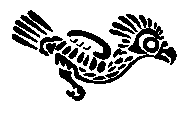
はじめによんでください
最適採食戦略・語彙集
glossary of the theory of Optimal Foraging Strategy

最適採食戦略・語彙集
(出典は口蔵(2000)に準拠し、一部改変した)
最適採食理論:optimal foraging theory
進化生態学:behavioral ecology
進化生態学:evolutionary ecology
社会生態学:socioecology
社会生物学:sociobiology
表現型:phenotype
遺伝子型:genotype
環境決定論:environmental determinism
環境可能論:environmental possibilism
文化生態学:cultural ecology
生態系生態人類学:ecosystem ecological anthropology
新機能主義:neofunctionalism
プロセス生態人類学:processual ecological anthropology
意思決定:decision-making
身体努力:somatic effort
生殖努力:reproductive effort
配偶努力:mating effort
親としての努力:parental effort
採食者:forager
採食:foraging
食餌幅:diet breadth
餌選択:prey choice
パッチ選択(パッチ=微小生息環境):patch choice
時間配分:time allocation
時間配分モデル:time allocation model
採食活動集団サイズ:group size
居住地選択:settlement choice
兼ね合い・トレードオフ:trade-off
戦略:strategy
最適戦略:optimal strategy
最適化:optimization
進化的安定戦略:Evolutionarily Stable Strategy, ESS
戦略目標:strategic goal
利用可能な選択肢:alternative
コストベネフィットを測る通貨:currency
制約:constraint
決定:decision
効用:utilization
至近通貨:proximate currency
純エネルギー収益率:net energy return rate
仮説ー演繹法:hypothetico-deductive method
均質環境・きめ細かな環境:fine-grained environment
採食収益率:foraging return rate
探索:searching
処理:handling
処置:processing
現場処置:field processing
密度・遭遇率:encounter rate
機会費用:opportunity cost
一般化された食餌:generalized diet
管理されたパッチ:managed patch
豊かな菜食者:affluent forager
移動時間:travelling time
パッチ・タイム(パッチ滞在時間):patch time
速度:rate
利得関数:gain function:パッチ滞在時間と獲得エネルギー量の関係
効用関数:utility funcition
単一最良パッチ:single best patch
限界値定理:marginal value theorem
パッチ間隙採食パターン:interstice foraging pattern
パッチごとの採食パターン:patch-to-patch foraging pattern
自由裁量の狩猟:discretionary game
埋め込まれた狩猟:embedded game
私利:self-interest
中心点採食:Central Place Foraging, CPF
一個の荷物運びモデル:Single-Prey Loader, SPL
複数個の荷物運びモデル:Multiple-Prey Loader, MPL
最大運搬距離:Maximum Transport Distance, MTD:獲得エネルギー量から消費可能な運搬距離
完全な情報:complete information
全知:omniscient
サンプリング・調査行動:sampling
おおざっぱなやり方・アバウトな方法:rule of thumb
決定論モデル:deterministic model
確率論モデル:stochastic model
不確実性:uncertainly
リスク:risk
リスク回避的:risk averse
リスク選好的:risk-prone
最少収益閾値:minimal return threshold, see starvation threshold
飢餓閾値:starvation threshold, see minimal return threshold
線形計画法:linear programming
無差別曲線:indifference curve
無差別曲線図:indifference map
栄養相補モデル:nutrient complementary model
投入:input
効用:output
最小問題:minimization problem
最大問題:maximization problem
食餌問題:diet problem
移動性:mobility
追跡:pursuit
日和見主義・機会主義:opportunism
財:utility
商品空間:commodity space
引用から
「最適化分析は,理論ではなくて方法であり,生物の構造と機能についての仮説を生み出す体系的な手段を提供することである。換言すれば,
「生物学における最適化理論の役割は生物が最適化することを示すのではなく,生命(活)の多様性を理解することである」(Maynard Smith
1978:52)。行動生態学にとって,最適化アプローチは自然淘汰理論の抽象的な原理と現実世界の多様な経験的事実との間の橋渡しとして役立つ」(口蔵
2000:773)。
文献
口蔵幸雄、2000「最適採食戦略:食物獲得の行動生態学」『国立民族学博物館研究報告』24(4):767-872.(→機関リポジト リー「国 立民族学博物館研究報告」)《YK_NME_Jap_24-767-2000.pdf》 パスワードつき
文献解題
最適採食戦略─食物獲得の行動生態学─
口蔵幸雄, 767,『 国立民族学博物館研究報告』 2000 24巻4号
[
本稿は行動生態学で発達した最適採食理論を人間の食物獲得活動へ適用した研究のレヴューである。最適採食理論に基づく食物獲得活動の研究では,
利用可能な戦略(行動)の中でどのような戦略が進化するかを予測する最適化分析が用いられる。ここでは最適採食モデルとして,食餌幅,パッチ選択とパッチ
内時間のモデル,およびこれら古典モデルの仮定を緩和することによって修正されたモデルとして中心点採食,資源の変動や食物分配とリスクの関係,複数の
「通貨」を取り入れた線形計画法と無差別曲線分析などがあつかわれる。現在までのところ,最適採食モデルの人間行動への適用事例ではモデルの予測と実際の
観察がうまく一致しないことが多いが,むしろそこから人間行動の特性を引き出し,モデルを改良することが重要である。
This article reviews the basic principles of optimal foraging theory
and their application to human foraging. The optimization approach used
in behavioral ecology assumes that individual foragers behave so as to
maximize some currency (usually net rate of energy return per unit of
foraging time ) which is assumed to correlate with fitness, and employs
models consisting of currencies to be maximized, decisions or foraglng
problems to analyzed, and constraints specifying options available to
the foragers and theire effcts.
The classical diet breadth model predicts a set of food resources that
maximizes energy return rate under a set of assumptions: a“ finegrained
” environment ( homogeneous resource distribution) , random encounters,
mutually exclusive search and handling costs, a rank of all food
resource types on the basis of net return rate on encounter,and
complete information. While the model can predict qualitative
subsistence patterns, such as a fluctuation of diet breadth in
accordance with changes in search or handling costs derived from
technological changes, many of the quantitative tests have revealed
discrepancies between the model‘s predictions and observed patterns.
This is mainly due to the fact that the human foraging patterns in
question sometimes violate the assumptions of the model. It is common
that male foragers often ignore plant foods that would increase overall
energy return rates of foraging if collected. Tests made within a set
of animal foods or one of plant foods show close fits between
predictions and observations. For a “ patchy ” environment, where resources are distributed in a
heterogeneous fashion, optimal patch use models are used to predict an
array of habitats ( patches ) to be exploited and how long a forager
stays in a patch before leaving for another. The optimal patch choice
model has the same structure and procedure as those of the optimal diet
breadth model, while replacing resource types with patch types. The
optimal patch residence time is soIved by using the marginal value
theorem, which assumes diminishing returns and determines the point at
which a forager should leave a depleting patch to search for another
one to maximize energy return rate. We can so far find no
anthropological studies of patch residence time that meet the
assumptions of the marginal value theorem except for one case. Most of
the studies incorrectly attempt to predict the proportion of time
foragers spend exploiting different patches on the assumption that
optimal foragers preferentially allocate foraging time to patches with
higher return rates. Relaxing and changing assumptions can modify the classic diet breadth
and patch use models. The central-place-foraging model in which
foraging is modeled as a trip with a given point ( a camp or village )
of departure and return is more suited to human foraging than the
classic models. Foraging models focused on acquisition and sharing of
information about resource conditions among foraging groups and
reduction of risk ( variancein food consumption ) by food sharing,
which are unique to human foragers, allow interesting predictions to be
made about choice behavior and social interaction. Humans are omnivorous animals and exploit simultaneously various food
resources greatly different in nutritional composition. The classic
foraging models reduce nutritional values of food only to energy. Most
of the critiques of the optimal foraging models have been directed
toward this point. The problem of multiple nutrient requirements has
been treated with a linear programming model that aims to predict the
least costly solution to an economic problem in which resources (
labor, energy, raw material, and money ) must be allocated among
competing activities. Another approach to evaluating food resources
along more than one scale is indifference analysis, borrowed from
microeconomics. This analysis predicts a utility-maximizing mix of
different but complementary and substitutable food resources. Each
approach has its strengths and weaknesses.
* 岐阜大学,国立民族学博物館共同研究員
Key Words: optimal foraging theory, behavioral ecology, human foragers,
diet breadth, patch use, central−place foraglng, risk, food sharing,
linear programming, indifference curve analysis
キーワード: 最適採食理論,行動生態学,狩猟採集民,食餌幅,パッチ利用,中心点採食,リスク,食物分配,線形計画法,無差別曲線分析
1 序
2 行動生態学の理論と最適化の分析
3 古典的モデル
1. 最適食餌幅
2. 最適パッチ利用
4 古典的モデルの修正
1. 中心点採食モデル
2. 情報の獲得
3. 資源の変動とリスク
4. 栄養の制約と通貨の問題
5. 最適採食理論におけるその他の論点
5 結論と展望」
Copyright & left Mitzub'ixi Quq Chi'j, 2009-2018